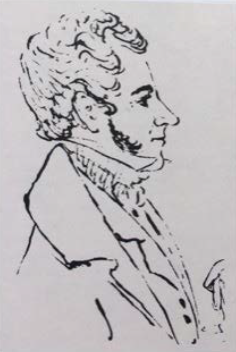The Bathurst Defence Complex 1820-1864
Magazine, Star Forts on Battery Hill and St John’s, “The Citadel”
DOI:
https://doi.org/10.21504/gwk8mh68Keywords:
Bathurst Defence Complex, Powder Magazine, Star Forts, St John’s Church, Cape Frontier Wars, 1820 Settlers, Lower Albany, Military Architecture, Colonial Defence, Lord Charles Somerset (1767-1831), Henry Somerset (1794-1862), Sir Rufane Shaw Donkin (1773-1841), Charles Michell, Sir Benjamin D’Urban, Sir James Edward Alexander (1802-1885)Abstract
This article examines the Bathurst Defence Complex, a crucial but geographically flawed military and civilian refuge on the Cape frontier, operational from its establishment in 1820 until its abandonment in 1864. Initiated by Acting Governor Sir Rufane Donkin as a township and administrative centre to protect the settler line, Bathurst's location in dense thicket was later criticised as highly unfavourable for defence against the Xhosa. The complex, which comprised the 1820 Powder Magazine and barracks, the two Star Forts (or redoubts) built on Battery Hill in 1835 following the Sixth Frontier War, and the fortified St John's Church (dubbed "The Citadel"), proved essential during multiple frontier conflicts, offering safety to settler families. The narrative details the complex's construction, key figures involved (including Donkin, Lord Charles Somerset, Henry Somerset, Sir Benjamin D'Urban, and Charles Michell), and its role during the 1834–35 and 1846 Frontier Wars, ultimately highlighting how the combined military and civilian structures formed a life-saving defensive system until shifting colonial security priorities led to its closure.
Downloads
References
Alexander, J. E. (1837). An Expedition of Discovery Into the Interior of Africa and a Narrative of a Campaign in Kaffirland. London: Henry Colburn.
Berning, J. M. (Ed.). (1989). Historical Conversations of Sir George Cory. Grahamstown Series.
Coetzee, C. G. (1995). Forts of the Eastern Cape 1799-1878: Securing a Frontier. Fort Hare.
Cory, G. M. (1910–1930). The Rise of South Africa (Vols. 1–6). London: Longman's Green.
Danziger, C. (1978). Lord Charles Somerset. Cape Town: Macdonald.
Godlonton, R. (1965). The Irruption of the Kaffir Horde into the Eastern Province of the Cape of Good Hope 1834-1835. Cape Town: C. Struik. (Facsimile reprint of 1836 edition).
Lancaster, J. C. S. (1991). The Governorship of Sir Benjamin D’Urban at the Cape of Good Hope 1834-1838. Archives Year Book for South African History.
Moore-Smith, G. C. (Ed.). (1903). The Autobiography of Lieutenant-General Sir Harry Smith. London: John Murray.
Morse-Jones, E. (2002). The Lower Albany Chronicle Part 1 1806-1825. Lower Albany Historical Society.
Richings, G. (2006). The Life and Work of Charles Michell. Simon’s Town: Fernwood Press.
Rivett-Carnac, D. E. (1966). Hawk’s Eye: Lieutenant-General Sir Henry Somerset. Cape Town: Howard Timmins.
Robson, L., & Oranje, M. (2012). Strategic Military Colonialism: the Cape Eastern Frontier 1806-1872. Scientia Militaria: South African Journal of Military Studies, 40(3), 85-117. https://doi.org/10.5787/40-2-996

Downloads
Published
Issue
Section
License
Copyright (c) 2025 Rod Hooper-Box

This work is licensed under a Creative Commons Attribution 4.0 International License.
In compliance with the South African Copyright Act 98 of 1978, the copyright of published articles resides with the authors. The Society retains to right to distribute articles as published within the journal.




